This was published 7 years ago
Best food around the world: The greatest meals of all time
By Ute Junker
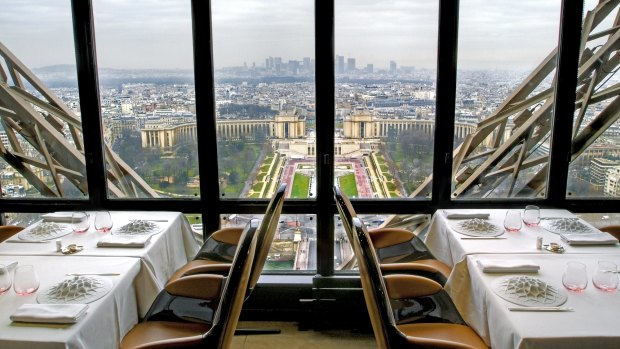
The view from Jules Verne, Paris. Credit: Pierre Monetta and Matt Aletti
A hot bowl of mushroom soup is not the best meal ever. Unless, that is, you've just spent an hour hiking uphill while the Irish weather does its worst, wind and rain alternating with driving sleet. Step into a warm hut and – I speak from experience here - that bowl of mushroom soup you're handed will be the best thing you have ever eaten.
Memorable meals come in many guises, and they don't necessarily involve linen tablecloths, silver service, or even a dessert trolley While I have eaten several astonishing haute cuisine meals, and can in some cases still recite each course from memory, most of my favourite meals are memorable not simply – or even mainly – because of the food.
Sometimes, it's about what else happened that day: like the fish tacos we consumed on the beach in Mexico after a thrilling day exploring ancient Mayan ruins. Sometimes, it's about the people you're with: like the simple meal of cheese and red wine I shared with a new friend in Rome. Sometimes, it's about the sense of place captured in every mouthful: like straight-from-the-sea razor clams, eaten in a windswept end-of-the-earth fishing village in Galicia.
Other meals are memorable for what they aren't. At the end of a backpacking trip through the Middle East, I will always remember the thrill of my first meal in Iran, a delicious concoction of chicken, pomegranate and walnut made all the more special by the simple fact that it wasn't shish kebab, my staple food for the last few weeks. (I was broke. It was cheap.)
What you eat while you travel will always be an important part of your memories, which is one of the reasons I always recommend taking a chance with food. Eat the grasshoppers. Slurp that weird seafood thing you've never seen before. You may hate it – but, on the other hand, it may turn out to be your best meal ever. Just ask the dozen other travel writers below.
ASADOR ETXEBARRI, ATXONDO, SPAIN
By Ben Groundwater
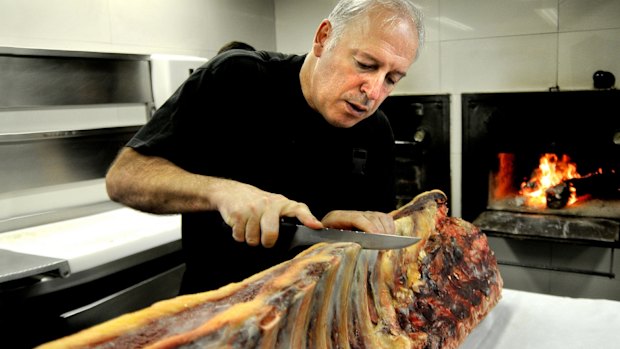
From the very beginning, it felt like a pilgrimage. You have to travel to get to the town of Atxondo. No one stays there, because there aren't any hotels. Atxondo, a few stone farmhouses nestled among the green hills of the Basque country, a one-hour drive from San Sebastian, would be pretty unremarkable if it wasn't home to one of the best restaurants in the world: Asador Etxebarri.
This small eatery, set in one of those farmhouses, is the middle of nowhere, and yet the centre of everything; a gastronomic wonder far away from outside influence, the ideal place for an obsessive chef to tinker and experiment until he has everything just right – which is exactly what Victor Arguinzoniz has done.
Every dish on Etxebarri's 15-course degustation menu is cooked using fire and smoke, from the chorizo sandwich, to the goats' butter with crusty bread, to the ruby-red Palamos prawns served with nothing but sea salt, to the tiny baby peas, to the "txuleta" of aged beef, to the ice-cream paired with beetroot juice. Everything is delicate and complex, despite the basic cooking method.
There's a danger in setting expectations too high when you've planned a pilgrimage for months beforehand; however, my girlfriend and I needn't have worried. Everything at the pilgrimage-worthy Etxebarri that day was perfect.
The restaurant accepts bookings via email, at reservas@asadoretxebarri.com. Book at least two to three months in advance. The 15-course degustation costs €125. See asadoretxebarri.com/en/
See also: Spain, the world's greatest country for food
A "PRIVATE KITCHEN", HONG KONG
By Sally Webb
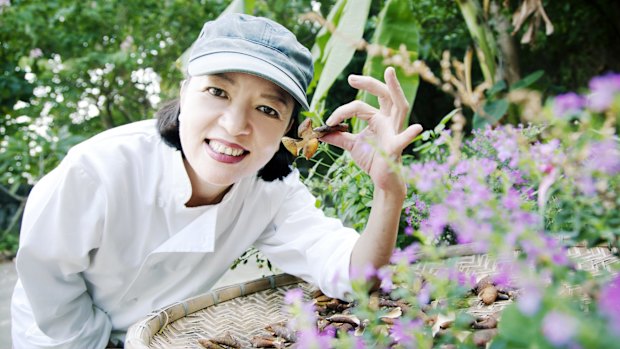
The directions seemed simple enough. "Head north from Kowloon to the New Territories. Turn off at Yuen Long, and you're here." We end up in maze of darkened laneways horribly lost, eventually arriving an hour late, having to trudge the last 150 metres on foot, past a swampy paddock full of noisy frogs.
It's summer 2007 and we're eating in one of Hong Kong's "private kitchens", effectively a semi-rural farmhouse, with self-taught chef Margaret Xu as our host.
No sooner are we seated than she places a steaming platter on the table. Baked in an oven fashioned out of terracotta pots, this yellow earth chicken is golden-skinned, salty and sweet in equal measure. It's not meant to be served at the beginning of the meal but can't wait any longer.
We don't care. This is quite simply the best chicken in the world. Xu's cooking is a fusion of the food of Hong Kong's traditional ethnic groups – Cantonese, Chiu Chow and Hakka among others – with everything done from scratch. Soon after our visit, she relocated to a heritage terrace in Wan Chai on Hong Kong Island, now one of the city's hippest food districts.
The banquet there was a history lesson through poetically-named courses such as "moon river" (prawns cooked in chrysanthemum and honey tea) and "drunken abalone" (baby abalone marinated in sake, shaoxing and ginger). Yellow Earth Chicken remained a highlight, together with bean curd with sea urchin custard for which she ground the soy beans by hand.
Chef Xu last year relocated Yin Yang Coastal, House 117, Ting Kau Village, Tsuen Wan, Kowloon, Hong Kong. See yinyang.hk. Bookings, with pre-payment, essential. See booking@yinyang.hk
See also: Risking the world's greatest dumping in Hong Kong
RISTORANTE PAOLI, FLORENCE
By Julietta Jameson
With a name like Julietta, Italy was always a calling. I finally went, in 2006, fleeing Sydney and a career crisis. Raw and in search of my next life phase, Italy would eventually soothe, refresh and inspire me, but not without some tears along the way. Some of those came on my late mother's birthday. I was in Florence on that date and decided to treat myself to a lovely lunch to celebrate her.
But three restaurants with free tables clearly visible said no to me. No to solo diners. Cue the waterworks. Just as I was about to give up and skulk back to my accommodation, I came upon Ristorante Paoli, the oldest restaurant in Florence. Wedged between two ritzy boutiques, I hesitated. My jangled nerves wanted no more rejection. A white-coated waiter appeared, carrying a tray of drinks for some smokers outside.
"Signora," he acknowledged warmly and motioned me in. I followed him inside to be enchanted by what I saw: an "antico" place with a vaulted ceiling covered in frescoes; shiny Tuscan pottery burgeoning with fruits, flowers and vegetables, warm wood panels and chairs and clothed tables.
My silver-haired waiter seated me in the middle of the busy restaurant (most usually shove us solo diners in corners) and lavished me with professional, impeccable service laced with fabulous Italian flair. And the food: classic trattoria done to perfection.
He didn't even care when I started to cry about my mum (a few wines and a lot of kindness will do that to an emotional person.) In fact, he understood. This is Italy, where crying is like breathing, after all.
Ristorante Paoli, Via de' Tavolini, 12R, Florence. Phone (+39) 055 216 215. See casatrattoria.com
See also: The new flavours of Florence
E'IA OTA, FRENCH POLYNESIA
By Craig Tansley
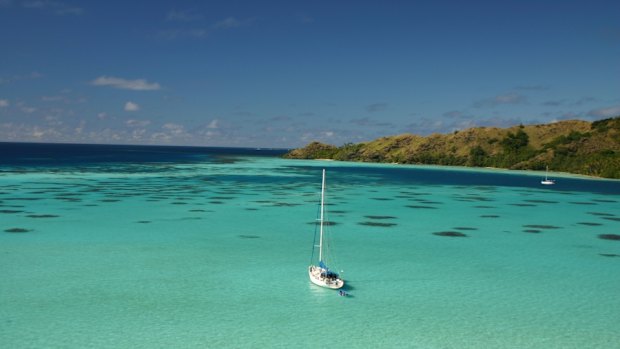
If you have fresh fish: then why cook it? And fish don't get fresher than in the Gambiers – French Polynesia's most remote, and least visited, archipelago, five hours flying time from Papeete.
The Gambiers' main inhabited island, Mangareva, sits in one of the world's largest lagoons. Life is simple here – and no English is spoken. I stay in a B&B run by a local family who offer guests a boat trip.
On board, skipper Benoit trolls for yellowfin tuna. Almost immediately, the line screams out and Benoit lets me pull in a 15 kilogram fish. We stop at an uninhabited motu (islet). I swim in the warm, blue water as Benoit fillets the fish on the beach beside me.
He slices the fish into cubes the size of 20 cent coins, then puts them in a plate of lime juice to "cook" gently, and adds chopped onion, capsicum, tomato and salt and pepper. For the grand finale, he climbs a coconut tree, and uses his T-shirt to squeeze milk from the coconut "meat".
He serves me e'ia ota – the French call it poisson cru – on a tiny island halfway between Australia and South America; as black-tip reef sharks and sting rays swim past in water so clear I see starfish 10 metres down.
Fly to Papeete with Air Tahiti Nuithen onwards to Mangareva with Air Tahiti (airtahiti.com). Stay at Pension Bianca & Benoit, call +689 4097 8376 or see airtahitinui.com.au; tahitinow.com.au. Boat trips cost around $100.
See also: The loveliest spot on Earth
SAINT-JEAN-DE-LUZ, FRANCE
By Steve Meacham
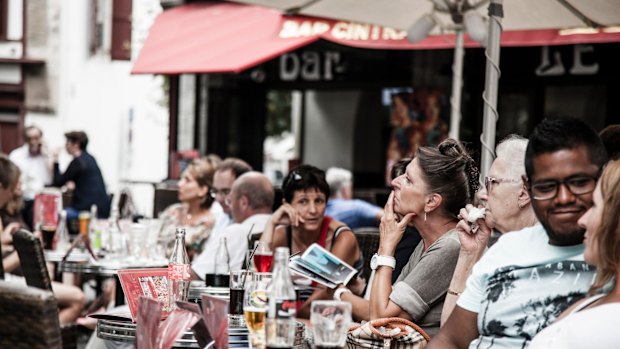
Credit: Alamy
As holidays go, it had been an unmitigated disaster. Twenty-five years ago my best mate and our respective girlfriends had towed our newly acquired water-ski boat from London, via a Channel ferry, to France's Basque region.
The villa we'd rented, in the foothills of the Pyrenees above the gorgeous Atlantic fishing village of Saint-Jean-de-Luz, was rose-covered and charming.
But we soon discovered why this underrated coast between Biarritz and the Spanish border is a surfing mecca. Huge waves make it completely unsuitable for water-skiing. Day after day, we'd launch the boat – only to suffer new humiliations. Broken propellers. Swamped engine. Near collisions. Crew mutinies.
Tempers exhausted, we gave ourselves the day off and headed to the old port, white-washed and red-roofed, to treat ourselves to a long, luscious lunch at a seafood restaurant on the quay. Our cares evaporated over the starters – bowls of the local version of gazpacho served with slices of seared tuna.
But it was the theatrical main course which drew gasps – a spectacular, multi-tiered Assiette de fruits de mer, piled high with the most superb, freshly caught lobster, crab, prawns, mussels and oysters, all washed down with a couple of bottles of local Semillon.
So simple. So delicious. So restorative. And so memorable, I can taste it still.
Saint-Jean-de-Luz's restaurants are renowned for their fresh seafood and Basque-influenced cuisine. See saint-jean-de-luz.com/en
See also: Food, wine, women: 15 reasons France is so popular
COOYA BEACH, QUEENSLAND
By Katrina Lobley
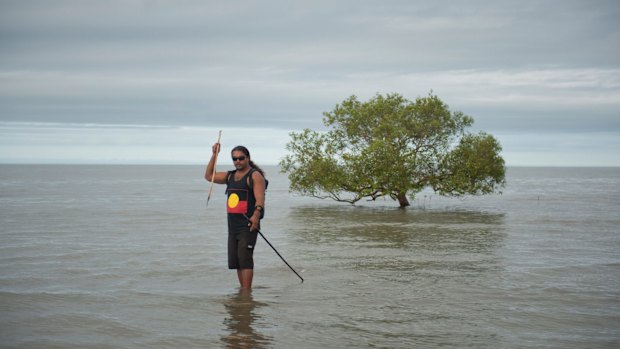
Credit: Alamy
There's not a linen tablecloth, silver cloche or hovering waiter in sight. But when indigenous guide Juan Walker invites guests to lunch on his parents' veranda at Cooya Beach, 50km north of Palm Cove in Far North Queensland, they're in for a special treat.
The Kuku Yalanji man's tours of his ancestral country can involve hunting and gathering ingredients for a seafood lunch with a difference.
Pippies are unearthed with a twist of the feet along an uninhabited shore. At Cooya Beach, mud crabs might scuttle across your feet as you stalk them across the rippled tidal flats while armed with a spear.
Perhaps the bucket will be filled with fish, mussels, periwinkles and razor shells. After the hunt, it's time to retire to the veranda to graze on pawpaw and passionfruit, or damper crowned with golden syrup and fresh-grated coconut, while the seafood haul is steamed in chilli, garlic, butter and coconut oil.
When the fragrant pile is tipped into a bowl, the day's lessons don't end there. Forget fancy crab cutlery – Walker simply levers the delicate flesh from the trickier parts of the shell using the pointy tip of a crab claw. That's age-old knowledge, right there.
Juan Walker's Walkabout Cultural Adventures offers a range of tours, including a full-day cultural experience that involves traditional hunting and lunch. See walkaboutadventures.com.au
See also: Australia's best destinations for a short, gourmet break
AL DI LA, BROOKLYN, NEW YORK
By Andrea Black
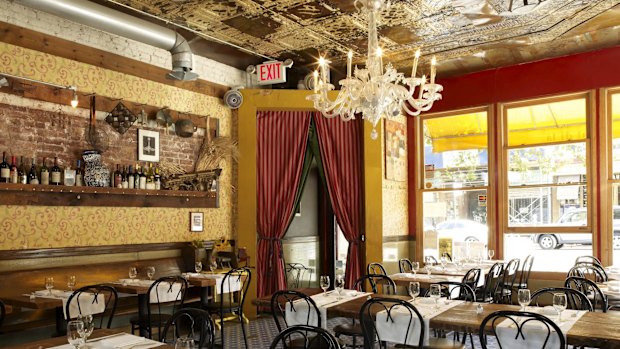
Any visitor is always looking for that perfect New York experience. Mostly it happens when you don't expect it to. For me it began standing in the toilet queue in a small Northern Italian trattoria in Brooklyn.
Al di La has the feel of someone's living room, maybe an extravagant uncle in the 1930s. A huge Venetian chandelier (casting a flattering light) hangs and red velvet curtains complement the yellow wallpaper. It's cosy and as such has the convivial nature of a dinner party.
It's also very popular, and with good reason. Frank Bruni, a New York Times columnist, once wrote: "I sing the praises of Al di La, sung so many times before, because it deserves the music."
Here the home-made pasta and such dishes as saltimbocca alla Romana command encores, and the prices are not daunting.
Walking to the door of the unisex toilet I spy another patron waiting. Usually in these situations small talk ensues but upon recognition I am rendered speechless. Lou Reed gives me a smile and a nod. Over yonder his wife, experimental performance artist Laurie Anderson takes a seat next to our party.
In those moments before the door unlocked, I want to tell Lou I saw his incredible performance at the State Theatre, ask him why he didn't keep the original version of Sweet Jane on Velvet Underground's Loaded album, and tell him how I made my dog listen to Laurie's high-frequency concert for canines. Instead I just said, "After you".
We don't dare spoil their privacy but now we like to think we shared a meal with the consummate New York couple. Gratified, Lou and Laurie eventually finish up and walk out behind the velvet curtain and into the New York night.
Al Di La Trattoria is primarily a walk-in restaurant, but a limited number of reservations are available for parties of six-10 persons. Go early to ensure a seat. See aldilatrattoria.com
See also: Five restaurants and bars where you can experience the real New York
LE JULES VERNE, EIFFEL TOWER, PARIS
By Alison Stewart
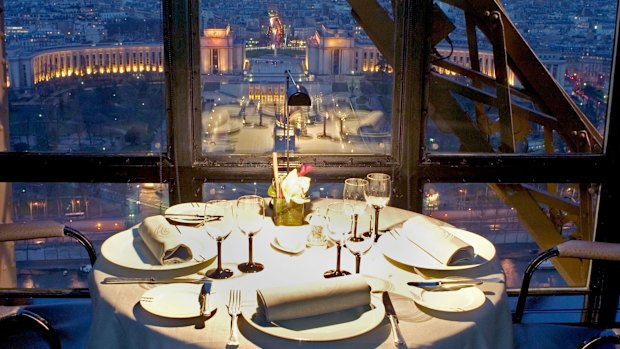
Credit: Alamy
Never simply about the food, my best meal was the perfect synchronicity of taste, ambience and company salted with an excellent sprinkle of high drama. Le Jules Verne, Alain Ducasse's Michelin-starred gem sits regally in the crown of Paris' Eiffel Tower with the City of Lights glittering below. Touristy? Actually, no.
Our extraordinary culinary journey begins with a satisfying leap over the two-hour queues. We take the private lift and as the restaurant's views materialise with the charming maitre d', our resolve fades and we go for broke. Champagne, s'il vous plait. Thanks to that, I can't exactly remember what we eat down to the last canard confit.
But our meal back in 2013 was bursting with complex flavour and beautifully presented. But there was also the sky going velvet, the moon rising over Montparnasse, the city's yellow glow-worm lights flicking on along Haussmann's boulevards, the 20,000 rippling tower lights dancing on the hour, the hungry Greek girl rejecting an engagement ring at the next table, then ordering caviar, and the neighbouring French couple snogging away happily.
Finally, the waiter, battling dodgy Wi-Fi, flipping our debit card through three times, then waking the next morning, quelle horreur! We discover €1,500 drained from our now-empty account (eventually refunded but only after we'd arrived home).
Book online up to three months in advance. Three-course lunch from €105. For dinner, five-course tasting menu costs €190, six-course €230, wine pairings €95 and €120 respectively. See lejulesverne-paris.com
See also: 40 fascinating facts about the Eiffel Tower you never knew
JEMAA EL-FNA, MARRAKESH, MOROCCO
By Ute Junker
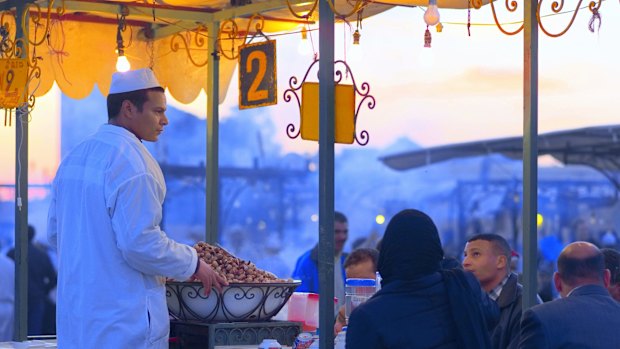
Credit: Getty Images
I am a disciplined eater. Not in the amount I eat (sadly), but in where I eat. Every trip I take, my meals are carefully planned out in advance, to make sure I cover off the local specialities, the hot spots and the hidden gems.
That doesn't mean I'm not ready to sink my teeth into tasty treats I stumble across; it just means I'm prepared to eat more than three meals a day if necessary.
On my last trip to Marrakesh, dinner at Jemaa el-Fna was high on my must-eat list. Every evening, this vast square is transformed into an al fresco diner. As the sun sets, numbered stalls spring up, each equipped with a blazing grill and a handful of tables and benches. It is smoky, crowded, raucous, and an essential Marrakesh experience.
Some of the stalls are known for particular specialities. I had, of course, made a list: this one for snails, that one for merguez sausages, that one for eggplant.
Then I left the list at home.
For a while, my friend Catherine and I wander around randomly as I rack my brains. "Grilled lamb was definitely 14," I say confidently. "Or perhaps 15."
Finally we give up, and squeeze into two vacant spots at one of the most popular eateries, ordering whatever looks good. We're helped out by our neighbours, two older Moroccan women on a girls' night out. Despite the language barrier, their good cheer is infectious: soon, all four of us are laughing loudly at our inept waiter.
The food wasn't spectacular, the seating wasn't that comfortable, the service was appalling: but that meal still brings a smile to my face every time I think of it.
The food stalls at Jemaa el-Fnaa are open every night of the week. See visitmorocco.com
A PORK ROLL STAND, HOI AN, VIETNAM
By Guy Wilkinson
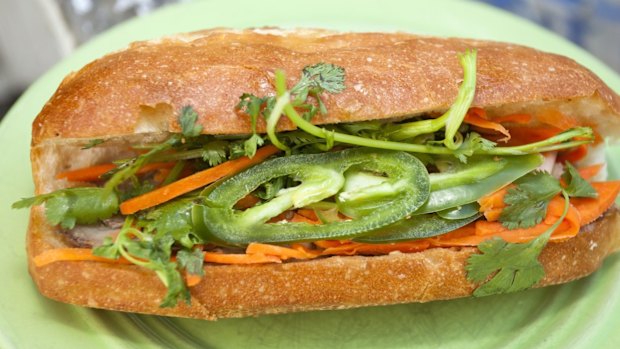
Credit: iStock
I've spent all day in a tailor shop in Hoi An, Vietnam getting a couple of suits made. Having stood like a mannequin all day, people fussing around me with tape measures, I've worked up an appetite.
With the tailors needing to make final adjustments, I have time to kill so I ventured out onto the streets in search of food. No more than a couple of hundred metres from the tailors, I notice a line has formed outside a simple stall, comprising entirely of Vietnamese people.
Taking this as a good sign, I join the queue without even really knowing what is on offer. Turns out the stall, run by an elderly lady, sells nothing other than banh mi, the traditional Vietnamese pork roll as well as cold cans of beer. The combination is a match made in heaven.
The baguette, crunchy yet fresh, is filled with generous slices of roast pork, shredded picked carrot, coriander, a dash of fish sauce and a few slices of eye-watering red chilli. Pulling up a plastic stool by the side of the road, I watch the scooters scream past as I enjoy the best meal of my life, for less than $5.
With your back to Bebe Tailors, cross the street and head left. You'll almost certainly see a line outside the stall. See vietnamtourism.com
See also: Vietnam's best-kept food secret
KASHIWAYA RESTAURANT, OSAKA, JAPAN
By Brian Johnston
A memorable meal isn't just about food but about ambience and theatre. My best meal began when I ducked under the boughs of a cherry tree, through a wooden gate, away from the concrete buzz of Osaka and into a mossy courtyard.
Rice-paper sliding doors whispered as I was ushered into a private dining room, empty but for tatami mats, a low table and an earthenware pot of purple irises. Chinese characters looped down a calligraphy scroll. A hostess in a silk kimono shimmered and poured sake.
Kashiwaya Restaurant is headed by chef-owner Hideaki Matsuo, and has three Michelin stars. It features kaiseki, the haute cuisine of Japan, which has origins closely linked to the tea ceremony.
The highly seasonal food and its arrangement have layers of symbolic meaning, with courses variously prepared (steamed, grilled, baked) to showcase the chef's skills, then presented in a reverential atmosphere.
Hard to say which was my favourite course from the succession of dishes presented by English-speaking hostess Nao. Summer fish was followed by prawn with sea-urchin roe; tofu and eggplant by eel with broad beans. Noodles in clam soup gives way to octopus with pickled plum. The meal closed with petits fours inspired by the chef's visits to France (though Japanese in flavours), accompanied by thick matcha green tea that features in tea ceremonies.
Exquisite from beginning to end.
Kashiwaya has no menu; choose from a number of courses (up to 12) when making reservations. Phone +81 663 86 22 34. See relaischateaux.com/kashiwaya
See also: The quick guide to Osaka
JOEL ROBUCHON, MGM GRAND HOTEL, LAS VEGAS
by Rob McFarland
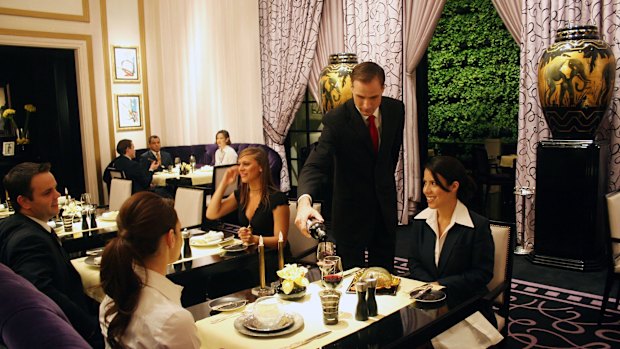
Credit: Getty Images
Twelve down, four to go. I glance at my brother and see that he too is teetering on the edge of a truffle-induced food coma. It's 2008 and for our first Michelin-starred dining experience, we've gone straight to the top – "Chef of the Century" Joel Robuchon's three-Michelin-starred restaurant in the MGM Grand Hotel in Las Vegas.
An oasis of silk drapes and chandeliered opulence, this intimate 42-seat restaurant resembles an elegant art deco Parisian townhouse. Every aspect of the experience is an exercise in excess – a bread trolley with two dozen varieties of freshly baked bread; a sweet cart with 40 different petits fours; a 33-page wine list with several bottles in excess of $US20,000.
Each of the 16 courses is a culinary work of art – a shallow dish of rich tomato gelee dotted with white pearls of mozzarella; two perfect towers of couscous topped with inky black Osetra caviar; a layered glass of creamy scallops and chive emulsion crowned with a wafer-thin buckwheat tuile.
How do the chefs achieve such exacting standards? A tour of the kitchen reveals they work in a Zen-like state of silent concentration.
For my then-23-year-old brother, whose diet consists mainly of fish fingers and chips, it's a foie gras foam too far. Shortly after leaving he donates $US600 of carefully matched food and wine to a nearby rest room.
I've since returned to Joel Robuchon and while it was every bit as decadent and delicious as I remembered, nothing will surpass that first heady plunge into the rarefied air of Michelin-starred dining.
MGM Grand Hotel. Open nightly for dinner. Eighteen-course tasting menu costs $US445. Phone +1 702 891 7925. See mgmgrand.com
See also: 19 things that will shock first-time visitors to Las Vegas
ORKHON VALLEY, MONGOLIA
Nina Karnikowski
The best things – and meals – in life really are worth the wait. That morning, there in our nomadic encampment in a quiet nook of the western Mongolia's Orkhon Valley, I'd observed and helped our nomadic hosts corral and milk their horses, then turn the milk into aaruul (dried cheese curd) and airag (fermented mare's milk) to eat and drink with our feast that night.
My travel companions and I had also helped make traditional buuz dumplings and distil vodka from the family's yak's milk. Now, for the grand finale, we watch two men slit the throat of a glossy goat. Their rough hands slide under the animal's skin to prise it away from the flesh, which they carve into rough chunks for the khorkhog, a goat meat and vegetable stew braised on the outdoor stove. The bits they don't use are slung up to dry inside the ger (Mongolian yurt), ensuring no piece goes to waste.
When it's finally time to feast, I quickly discover this is not the most delicious meal of my life. The cheese is overly tangy, the goat meat is a little tough, and the airag? Let's not. But sitting in the open-sided dining tent in the middle of this bucolic valley, after spending the day observing a way of life that has remained unchanged for centuries, is absolutely unforgettable.
Coming from our world of instant gratification, it has been immeasurably refreshing to see people waiting for what they want, and living in such harmony with their environment.
Frui's 14-day Mongolian photography holiday, including a two-night stay with a nomadic family, costs $5900. Dates for 2016 are July 15-28 and July 28-Aug 10. See frui.com.au
FOUR TOP CHEFS ON THE BEST MEALS OF THEIR LIVES
PETER KURUVITA chef, restaurateur, author, television presenter
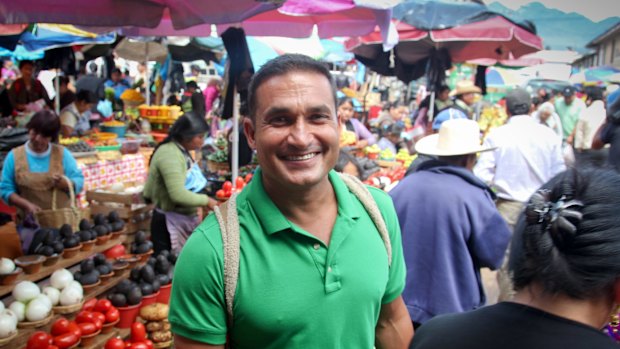
VATULELE ISLAND, FIJI
"My wife Karen and I worked on a Fijian island called Vatulele for two years. One day we went to a beach called Long Beach for a barbecue with a local family. I asked them what I needed to bring: 'just some chilies and limes, everything else we will catch.'
"We built a fire, then went diving to harvest nama [sea grapes] and lumi [seagrass]. One of the boys climbed a coconut tree and we scraped the coconut with seashells, squeezed the milk and mixed the lumi with it; the gelatin in the lumi set the coconut milk to make a cake.
"Then we dived for giant sea urchins, the mother cracked the spines off then rolled them in the coals. When they were opened the roe was still soft but had this wonderful smoky taste – we dipped them into a sauce we made from crystal-clear sea water which I crushed the chilies and lime into.
"The boys caught reef fish that were thrown whole into the fire until they went totally black; the scales acted as foil, so inside was perfectly steamed white flesh. A little bit of nama and sea grass cakes with the chili salt water on top, and it was the tastiest meal ever." See vatulele.com
DAN HONG executive chef, Mr Wong, Ms.G's and El Loco
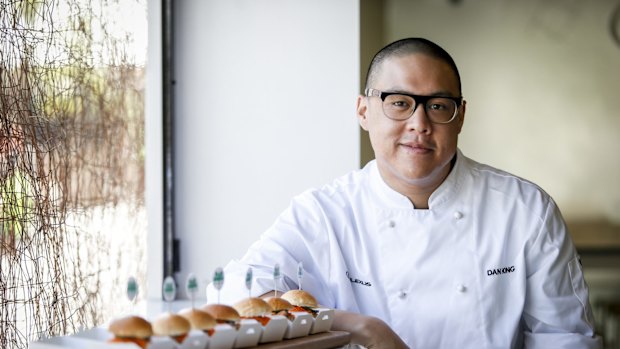
"Four years ago at Sin Huat Eating House. It's one of Singapore's most expensive restaurants – not because of the setting because it's in Geylang, a bit of a dingy area, there are plastic chairs and tables and you're sitting outside – but because you're eating the very best seafood in Singapore.
"There was no menu, which meant we didn't know how much anything was until the end, it was all about what was best on the day. The chef and his wife are the only two people who work there; he's like the soup Nazi from Seinfeld, he'll take your order and cook your food whenever he wants.
"We ordered then waited about half an hour, drinking Tiger beers outside in the heat, until the first course of steamed gong gong [sea snails] came with an amazing garlic, chilli, shallot and soy sauce.
Another 40 minutes went by, for part of which he was just sitting down watching TV, before we got the live scallops with black bean sauce, then delicious steamed frog and huge steamed prawns with loads of garlic and soy.
"Finally the main course of crab bee hoon, his signature dish that's now done everywhere in Singapore. It's huge mud crab that he gets from Sri Lanka stir fried to perfection with rice vermicelli and a secret broth.
"We didn't mind waiting 40 minutes between each course in the hot Singapore humidity because the food was so amazing. And as a chef I really respected that he was the only one taking orders and cooking for the whole restaurant."
BELLA JAKUBIAK chef, winner of My Kitchen Rules, caterer, television presenter

POD MIEDZA RESTAURANT, BUKOWINA TATRZANSKA, POLAND
"It was 2013, in a small Polish alpine town called Bukowina Tatrzanska. You've never seen more beautiful views, an incredible sea of green, peppered with beautiful traditional wooden chalets. Lunch is in the sun, on the deck of one of these chalets at Pod Miedza which, just like all the amazing restaurants in this region, serves local goralskie [highlander] cuisine made with local produce.
"I order scypek z zurawina, a local sheep's milk cheese similar to halloumi, grilled to perfection and served with local cranberry jam. Next is a slow-cooked stew made with alpine wild venison and potato, cooked and served in a small campfire cauldron. Add to that a bickering old Polish aunt and uncle, a few pints of spiced mulled beer and a sense of post-winter awakening, and there you have it.
"My best meal ever."
See podmiedza.pl
SCOTT PICKETT chef/owner, Estelle, Northcote and Saint Crispin, Collingwood, Victoria
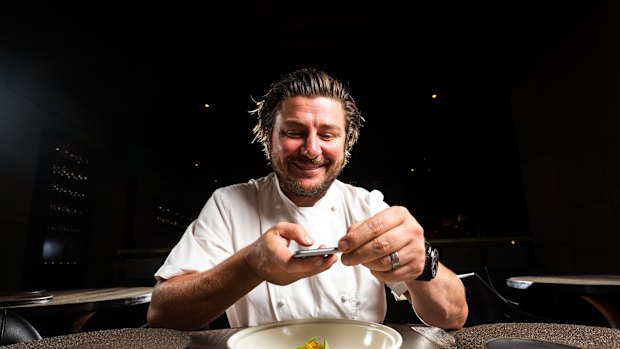
"During a big trip to Europe 18 months ago I ate at Le Suquet by Michel Bras in Laguiole, a three-star Michelin restaurant on a mountain top in the south of France.
"Michel Bras is an idol of mine since he was the first one to really, in the modern day sense, forage in the early 80s. I flew into Montpellier, hired a car (an 80s convertible, I wanted to do it properly!) and drove three hours up these little windy roads into the alps to the restaurant.
"The front of the restaurant is a 180-degree glass wall looking out over the beautiful arid nothingness, you're perched on the top of a mountain and you can really feel a sense of place that's reflected in the food. The first course (of 16 courses) I'll never forget, a house-baked loaf of bread that they'd piped my name on to.
"A few courses later we had the signature dish, Le Gargouillou, a plate of veggies that Bras forages and buys every morning from the markets. There must have been 30 different vegetables - they were crispy, crunchy, salty and sour all at once, and it looked like a piece of art. It was a three thousand dollar dinner, but it was the best of my life."
See bras.fr
MATT MORAN chef/owner, Aria Sydney, Chiswick and Chiswick at the Gallery, North Bondi Fish
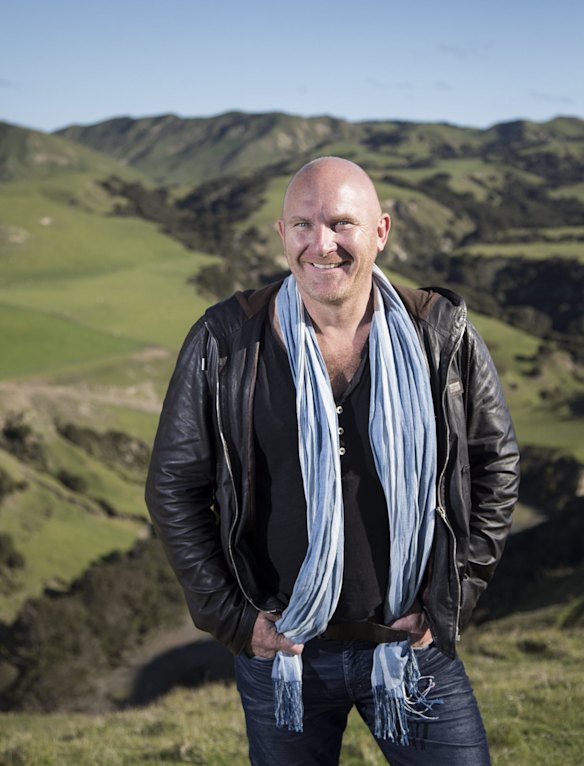
"I could tell you about dining at the most incredible three stars around the world – the Fat Duck and El Bulli and all the rarest ones – but sometimes it's the spur of the moment experiences you really remember. Like when Anthony Puharich from Victor Churchill [an upmarket Sydney butcher] and I decided to cook a hangi on a saltbush farm in Port Augusta while we were shooting a pilot.
"It was about 45 degrees and we'd had two flat tyres while driving that day so we were running really late. But we dug a big hole, I put the dorper lamb shoulder that I'd brined and seasoned earlier into a hessian sack, then lit a fire and cooked it in the ground with hot rocks and charcoal for about five hours.
"The lambs were eating saltbush around that area, so the meat had this incredible salty flavour to it and was just falling off the bone, it was to die for. We had to fight the flies for it and ate it just standing around a bench with bread rolls, a big slab of butter and a bucket full of chutney we'd made the day before, but it was one of the most incredible things I've ever eaten." See southaustralia.com
Interviews by Nina Karnikowski
Sign up for the Traveller Deals newsletter
Get exclusive travel deals delivered straight to your inbox. Sign up now.